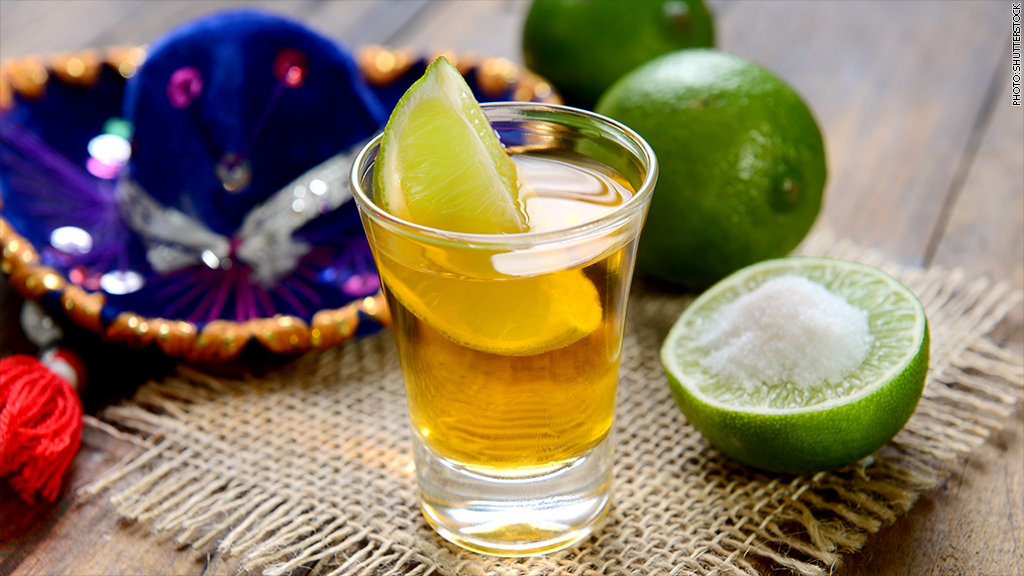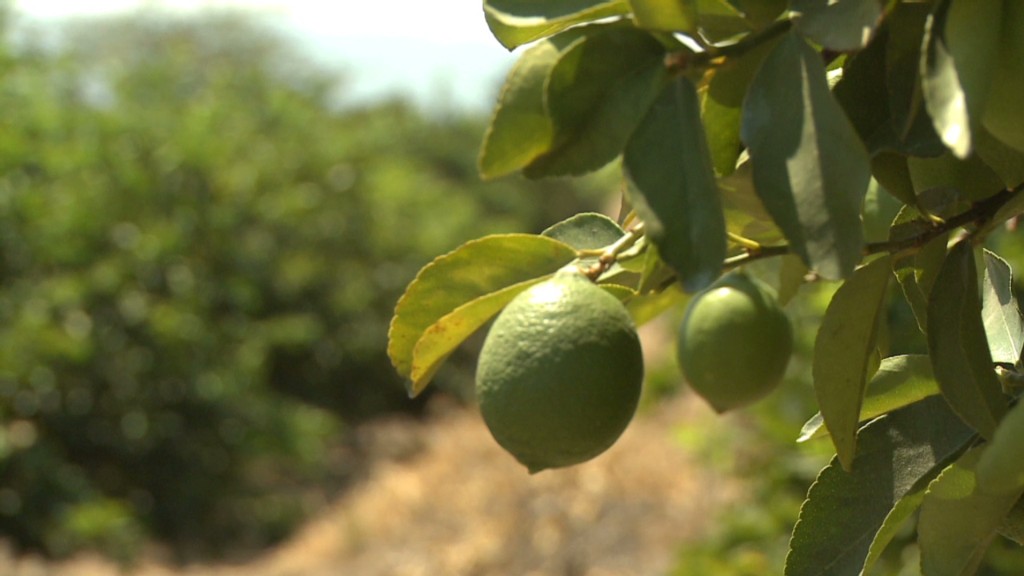
Don't blame your bartender this Cinco de Mayo for tossing a lemon in your Corona. Blame shadowy groups like the Knights Templar Cartel.
While the great lime shortage of 2014 was initially sparked by severe winter weather and drought conditions in Mexico, criminal organizations have used violence and extortion to exacerbate the situation. The price of a case of limes, a mainstay of margaritas, guacamole and summer beers, has more than quadrupled in recent months.
The lime shortage illustrates the close ties between the U.S. and Mexican economies and how violence south of the Rio Grande can have ripple effects on American consumers -- and not just the ones hitting the beaches in Cabo San Lucas and Cancún.
"Most people in the U.S. don't realize how highly dependent we are on Mexico for certain products. They don't understand how much our economies are intertwined. The bad things happening in Mexico do have an impact on U.S. consumers and U.S. exporters," said David Shirk, a security specialist at the Mexico Institute of the Woodrow Wilson International Center for Scholars.
Mexico is the world's largest exporter of limes, sourcing almost all of the limes the U.S. consumes.
War on drugs fallout
The ability of organized crime to impact lime prices highlights unintended consequences tied to the U.S.-led war on drugs.
The Knights Templar, which is based in the lime producing epicenter of Michoacán, is a splinter group of La Familia Michoacana, the drug cartel dismantled by law enforcement around 2011.
"Breaking up major organized crime groups into smaller pieces does not necessarily make them more manageable," said Shirk.
Related: Airlines nix limes as prices skyrocket
In recent years the group has pushed into kidnapping, human trafficking and extortion of various business owners, including those involved in lime exports.
"As it becomes more and more difficult to move drugs into the United States, all of these cartels have diversified their businesses," said Shannon O'Neil, a senior fellow for Latin American studies at the Council on Foreign Relations.

Cartel members have demanded a certain percentage of orchard owners' lime shipments, threatening to burn down their farms, rape their daughters or kill their children.
Business owners inside and outside the lime industry have recently pushed back by forming vigilante "self-defense" groups, which have battled the drug cartels in violent shootouts.
"They decided, 'We are losing our livelihood and need to defend our land.' It's very Wild West," said O'Neil.
The Mexican government has responded forcefully with a military presence and told the vigilante groups to stand down by May 10. It remains to be seen if they will do so.
"The influence of organized crime groups is extremely pervasive and affects daily life in ways that are shocking," said Shirk. "It's part of daily life in Michoacán and one of the unintended consequences of the drug war."
Lime prices skyrocket
The violence in the region and threats from criminal organizations has made it all but impossible for the U.S. Food and Drug Administration to certify the limes that are emerging from Mexico are being grown in a sanitary way.
The fallout has jacked up prices for U.S. and Mexican consumers and businesses accustomed to celebrating Cinco de Mayo with limes in their beers, margaritas and mojitos.
A case of limes now goes for close to $100, up substantially from reports of $15 to $20 last year. The average price of a lime at the grocery store is up about a quarter from last year, according to the Department of Agriculture.
That has forced grocery stores, bars and restaurants to pass along some of the costs to consumers or eat into their profits. Even if places do get limes, they are often smaller and less juicy.
Analysts said Americans can expect price disruptions in the future due to the difficult security situation in Mexico.
For example, drug cartels have recently pushed into the country's avocado industry, although that crop hasn't been suffering from the same levels of weather induced shortages.
"I don't think organized crime groups care about limes at all. They care about making a profit," said Shirk. "Mexico's economic and security problems are our own."
Readers: How much does a lime cost in your hometown? Leave your response in the comments below or tweet us @CNNMoneyInvest
CNNMoney managing editor Lex Haris spotted a lime on sale for $1.29 in Manhattan over the weekend.
CNNMoney markets editor Heather Long saw them for $0.99 in her part of New York City.
Lime lovers should consider moving to Rockford, Illinois. Reader Michael Donohue says they only cost a mere $0.10 in Rockford.
It's not so bad in Austin, Texas, either where William Merryman tells us limes retail at $0.44 each.
Vicki Iris reports $0.70 for a lime in the state of Victoria, Australia.
The pity prize goes to Calgary, Canada. Reader "bd" says the 2013 price in his hometown was $0.35. It's now $1.54 a lime. Sour indeed.
The deal of the week just might be in Dallas. L. Jahlil tells us limes have been $0.99 a piece lately, but there was a Cinco de Mayo sale of $0.99 a pound!
Meanwhile Marisol Marquez of Florida and Jorge Rocket aren't too concerned about the lime price spike. They grow their own. As Jorge aptly tweeted us, "Wanna buy some?"





